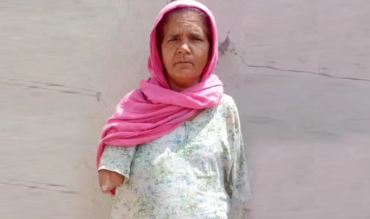The COVID-19 has devastated all sectors of life in Pakistan. The lethal pandemic virus has led to the lockdown of several countries across the world. Pakistan is also one of the countries that have followed a nationwide lockdown due to the coronavirus till 30th April.
The daily wagers of Pakistan are struggling to survive in coronavirus lockdown. The government and certain segments of society are doing their best to help them. But the truth is, a majority of such people are facing hunger and are waiting for some help or a miracle.
To combat poverty during the COVID-19 crisis, the government has initiated the Ehsaas program. According to PM Imran Khan, the program is for the extreme poor, orphans, widows, the homeless and the disabled. However, an elderly “disabled” woman in Vehari named Munira Bibi, who was eligible for the Ehsaas program, was denied the financial assistance as she has no hands to complete the biometric verification for this process.
Munira Bibi denied payment due to no arms
According to details, the elderly woman in Vehari could not get help despite being eligible under the Ehsaas program. Munira Bibi said she received a message on the phone. The message stated she was eligible for the Ehsaas Kiflat Aid program. However, but when she went to collect it, the staff denied her the aid. They said that she could not get the money because she did not have a thumbprint.



Source: Facebook
The woman said earlier she got money from the government as she was disabled. But now she could not get the money due to the unavailability of thumbprint (biometric verification), which is mandatory for the Ehsaas program.
Munira Bibi, a widow, and mother of four children demanded that the premier take notice of the matter and help her and provide relief.
Inefficient administration of Ehsaas Program
In a similar scenario to Munira Bibi, a 78-year-old was rejected and denied the Ehsaas program fund. The reason for the rejection of payment was that his fingerprints have gone due to his age. This is why he cannot be provided with the cash under the Ehsaas scheme.



Source: Dawn
It is sad to see that the Ehsaas program has failed to develop a mechanism for those who cannot reach centers. Furthermore, the administration has also failed in creating a strategy for those whose fingerprints have perished. Let’s hope that the government can find a solution to this problem.
What do you think of this story? Let us know in the comments section below.















